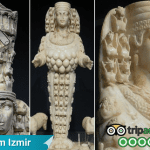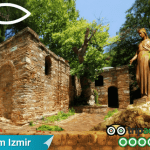Quick Summary
The Celsus Library in Ephesus, restored between 1972 and 1978 by Dr. F. Hueber, was initially constructed by Tiberius Aquila as a memorial tomb for his father, Julius Celsus Polemeanus, and completed in 117 AD. The library’s intricate design includes a grave room under the apsidal wall, accessible via a narrow passage, and decorated with high-quality marble and symbolic carvings. The building features two floors with Corinthian columns, elaborate doors, and statues representing virtues, with original statues housed in Vienna. The library once held approximately 12,000 scrolls in niches designed to prevent humidity. The structure’s architectural modifications, such as a curved podium, created a monumental appearance despite its surrounding buildings. The library suffered damage from Gothic attacks in 262 AD and an earthquake in the 10th century but was partially restored in the 4th century. Next to the library, the Mazeus-Mithridates Gate, constructed by freed slaves in honor of Emperor Augustus and his family, showcases a triumphal arch design with inscriptions dedicated to its patrons.
Table of contents
History of the Library of Celsus
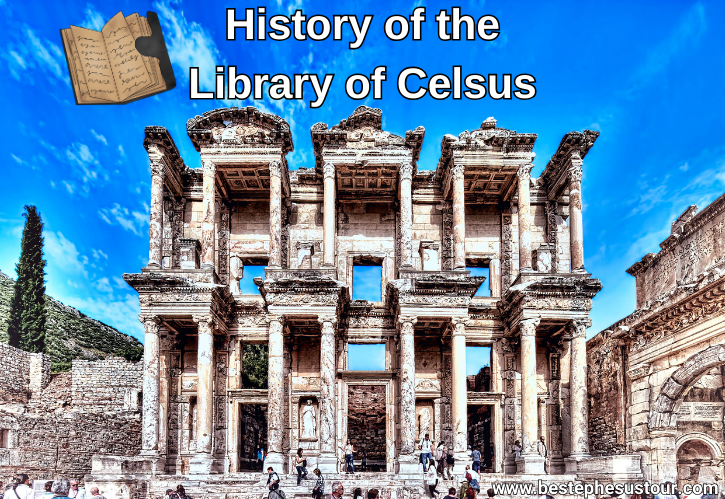
One of the monumental buildings in Ephesus is the Celsus Library. The library was found in a very ruined condition in 1904 and was restored by the architect and restorer Dr. F. Hueber between 1972 and 1978. After Julius Celsus Polemeanus, who was the pro-consul, died in Ephesus at the age of 70, his son Tiberius Aquila had this library built as a tomb memorial for his father. It is estimated that this library was completed in 117 AD. The grave room is under the apse wall in the library and can be reached via a narrow road behind the north wall. The tomb of Celsus is made of high-quality marble and is ornamented with a Cupid, garlands, and rosettes. When the tomb was found and opened in 1904, it was seen that the skeleton was protected with a lead cover.
The Celsus Library Video
Architectural Features of the Library of Celsus
The room has two floors. On the first floor, there are double columns on a podium which is 21 meters high and accessed by nine stairs. Among these, three richly framed doors lead inside. The middle door, wider and higher than the others, is typical of many ancient buildings.
Four Statues Representing Virtues of Celsus
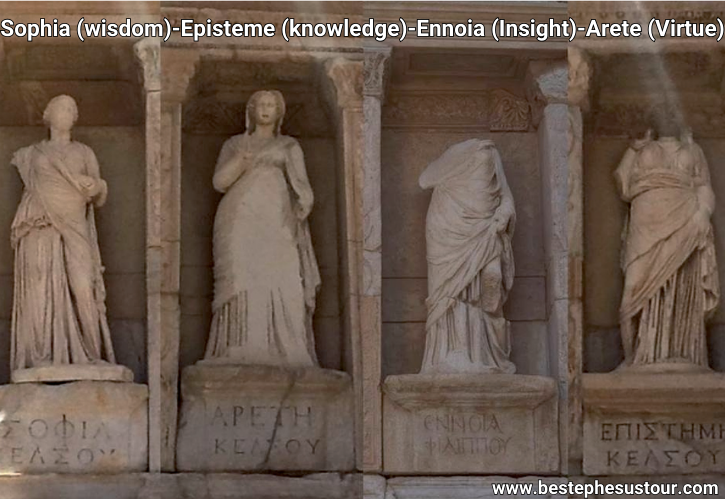
The niches between the walls contain four inscribed statues representing the virtues of Celsus: Sophia (wisdom), Episteme (knowledge), Ennoia (Insight), and Arete (Virtue). The originals of these statues are in Vienna, and their copies were made and brought here during the restorations.
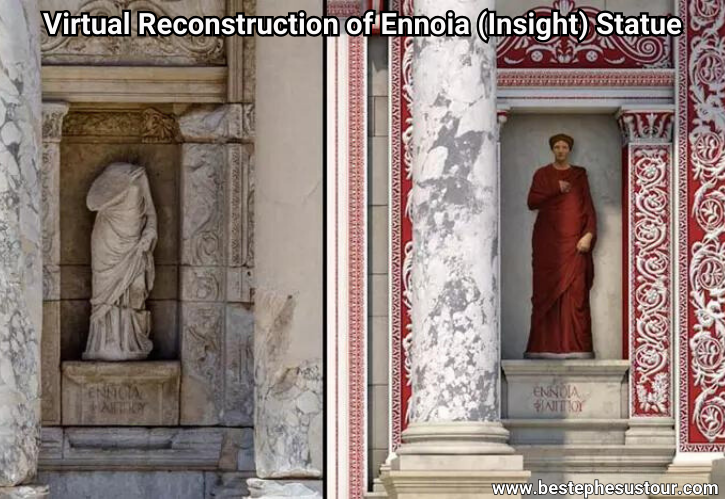
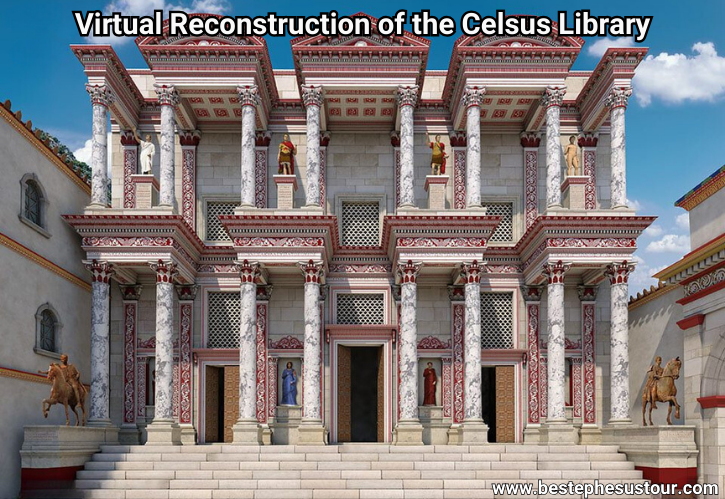
Virtual Reconstructions Source: https://virtualreconstruction.com/wp/
Second Floor of the Library of Celsus
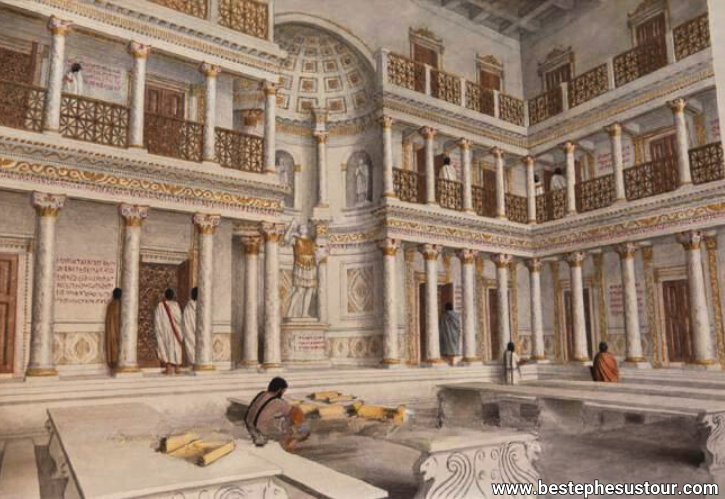
The columns on the second floor also have Corinthian capitals but are smaller, and their pediments alternate between semi-circular and triangular shapes. Behind the columns above the doors are three windows. The inner doors of the library have two rows of niches, with a stone seat in front of the first row. These niches once held approximately 12,000 scrolls, protected from humidity by keeping the backs of the walls empty. Although it appears to have two floors due to the niches, it does not. It is believed there was a balcony with a banister at the front.
The Grave Room and Later Additions
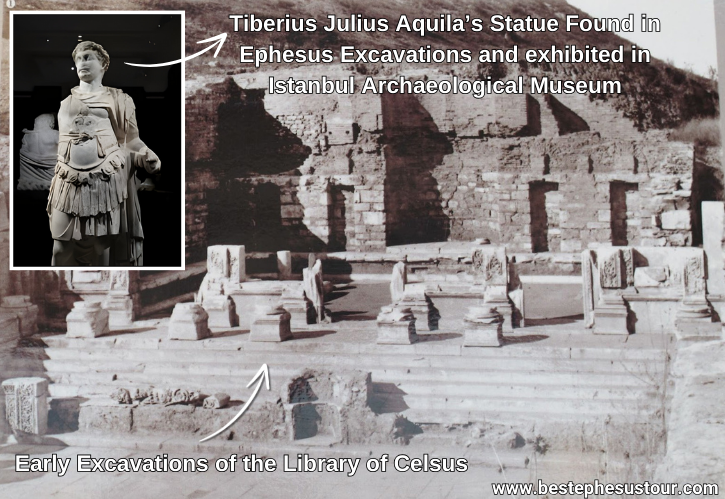
The area above the grave room on the west wall is apsidal. A statue found during the excavation, thought to belong to either Celsus or his son, is believed to have been in this semi-circular apse. This statue is now exhibited at the Istanbul Archaeological Museum. The library was completed by the heirs because Celsus’ son, Tiberius Julius Aquila, died before the building was finished. Aquila left 25,000 dinars to obtain the book-rolls. The library was built after the surrounding structures (the Mazeus Mithridates Gate on the north and the altar on the south), requiring some changes in perspective to achieve the desired monumental appearance. To do so, the podium on which the columns stand was bow-shaped (higher in the middle and lower at the sides). The construction elements, such as the columns and their capitals, were made smaller on the sides to create an illusion of depth.
Gothic Invasions and Restoration
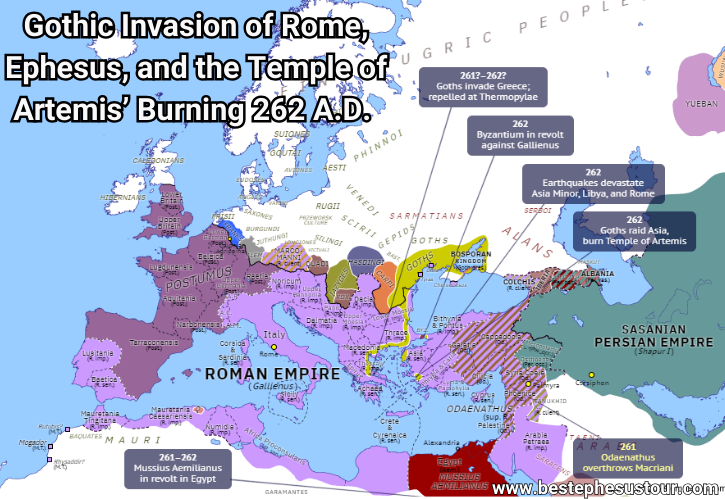
The wooden construction elements of the frieze were burned down during the Gothic invasions in 262 A.D., but the front wall was not significantly affected. In the 4th century, this wall was restored along with other structures, and a small fountain was built in the small square in front. The wall was destroyed in an earthquake in the 10th century. During excavations, frieze blocks depicting the Parthian wars were found on both sides of the fountain niches. The late-period wall and gate in front of the library were built when the city had shrunk. The tomb was found during a museum excavation in 1968. The inscription on it states that it belongs to T. Claudius Flavianus Dionysus and was made in the 2nd century A.D.
The Mazeus-Mithridates Gate
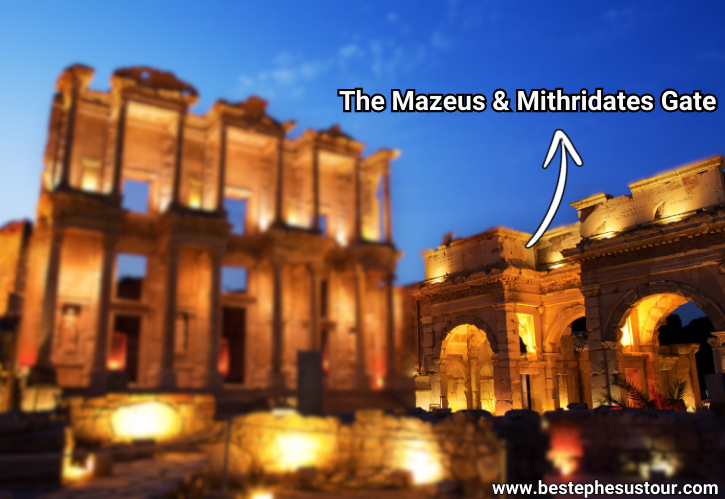
The monumental gate next to the Library of Celsus is the south gate of the Ephesus Commerce Agora. Mazeus and Mithridates, two slaves in the service of Emperor Augustus, had this gate made after being set free, dedicating it to Augustus, his wife Livia, his daughter Julia, and his son-in-law Agrippa. The gate is shaped like a victory arch with three passageways. The thick legs between the passageways support the arch above and the richly ornamented frieze that follows. At the very top are the attic walls. The middle passageway is slightly recessed, giving the gate depth and the attic walls a crown-like appearance. It is estimated that the gate was built during the 4th and 3rd centuries B.C.
Inscriptions and Historical Significance
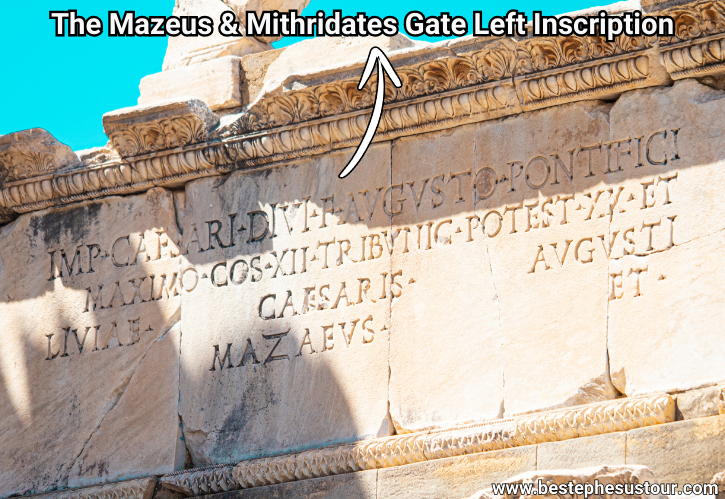
The dedication inscriptions are on the attic walls of the side passageways. On the west side, the inscription reads;
“Im (peratori) Caesari Divi f (ilio) Augusto Pontefici Maximo co (n)s(uli) XII. Tribunic(is) Podest ate) xx et Liviae Caesaris Augusti Mazeus et a livia moglie di Cesare Augusto M.Agrippae L(ucii) f(ilio) co(n)s(uli) Tert(ium) imb(eratori) Tribunic(is) Podest(ate) vi et lulia Caesaris Augusti Fi(liae) Mithridates Patronis.”
The inscription, in Latin and engraved with bronze letters on the attics, contains a small typo in the abbreviation “imp.” The translation of the inscription is;
“Emperor Caesar, God’s son Augustus, the supreme priest, 12 times a council, 20 times a tribune, and Caesar Augustus’ wife Livia, the son Lucius Marc Agrippa, 3 times a council, emperor, 6 times a tribune, and the daughter of Caesar Augustus, Julia; from Mazeus and Mithridates to their masters and the public.”
Third Largest Library of the Ancient World
The Library of Celsus was the third largest library in the ancient world, containing up to 12,000 scrolls, after the libraries of Alexandria (in Egypt) and Pergamum (in Izmir Turkey). These three libraries competed with each other. To prevent the other libraries from growing, Cleopatra banned the export of papyrus to Anatolia.
The Invention of the Parchment Paper
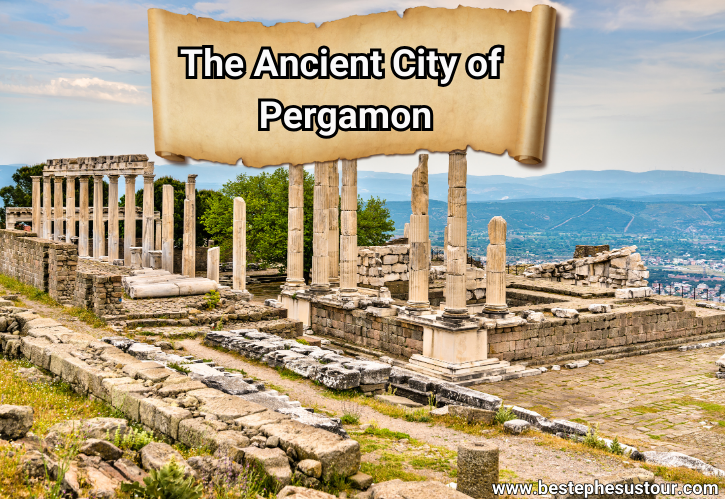
Thereupon, Eumenes II, King of Pergamum, initiated a competition to find an alternative to papyrus. He offered a prize to the winner. The winner was Kratos, the director of the Library of Pergamum. He developed a method to turn animal skins, such as those from sheep, goats, calves, pigs, and antelopes, into paper. This paper was named Pergamana, after Pergamum. The parchment we use today is derived from Pergamana.
The Celsus Library After Dark
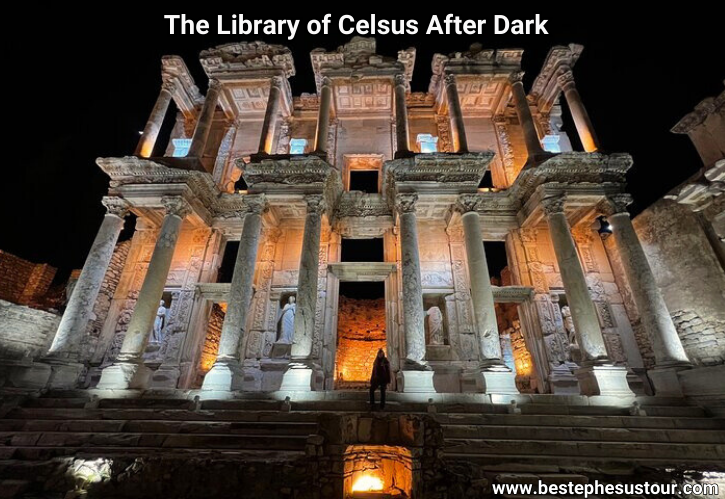
As of 2024, the Ancient City of Ephesus is open until midnight. The illuminated version of the city is a must-see, with the Celsus Library being the most iconic structure. The lighting transforms the city, creating a stunning and unique experience. The city is illuminated after 19:00 and access is only possible from the lower gate. The upper gate closes at 19:00.




